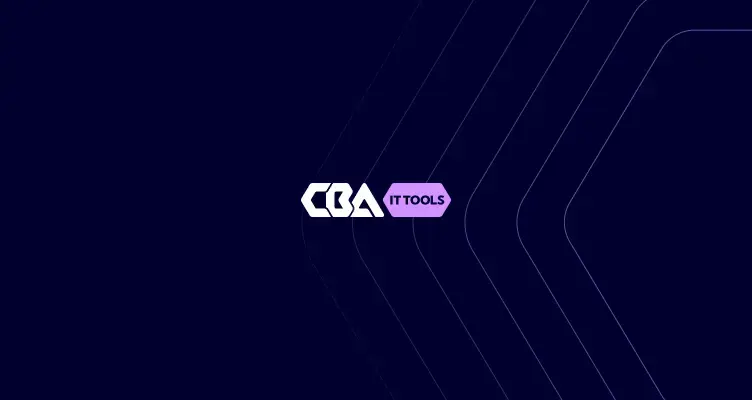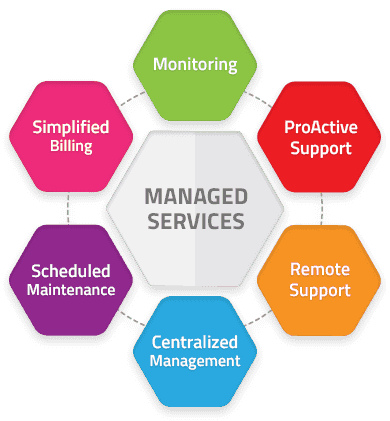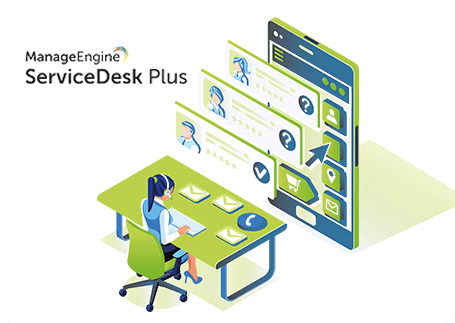AI and ITSM: Smart Strategies to Prevent IT Burnout
61% of IT professionals report that their work has a negative impact on their well-being. That’s hardly surprising. As organizations grow and become increasingly dependent on IT, service desks face a massive surge in workload—often without additional staff or budget to balance it out. In addition to resolving complex incidents and implementing changes, many IT teams still spend a large portion of their time on simple, repetitive tasks such as password resets, access requests, and status updates. This accumulation of routine work leads to stress and, ultimately, burnout.
Preventing IT Burnout
It’s not only the complex, high-risk problems such as major incidents or failed changes that exhaust IT technicians and service desk analysts, but also the accumulation of repetitive L1 support tasks like confirming and updating tickets, informing stakeholders, and resetting passwords.
Although the conventional response to burnout often focuses on wellness initiatives for service desk staff or encouraging them to take time off, the workload remains unsustainable without practical measures such as hiring more people or expanding the IT budget. But there is hope. Addressing the root causes of IT burnout can truly help service desk staff balance their workload without draining their mental health. This includes, among other things:
Repetitive and tedious tasks for IT technicians
In this article, we’ll explore how modern ITSM platforms, with workflow automation and AI capabilities, can help resolve the root causes of IT burnout. Discover ITSM strategies that reduce ticket volume, improve self-service, eliminate monotony, and prevent unsustainable multitasking across different apps—for a happier and healthier IT service desk.
What causes IT burnout?
There are several core stressors and bottlenecks that can push your IT technicians toward burnout. Some of these include:
1. Monotonous high volumes: repetitive L1 tickets and ticket management
As businesses expand operations and rely more on IT to digitize their internal processes, service desks see a sharp rise in everyday tickets, such as:
-
Password resets
-
VPN access
-
Software requests
On top of that come routine administrative tasks such as assigning tickets to the right staff, updating their status, and keeping all stakeholders informed. When both ticket handling and ticket administration are performed manually, it drains your staff and leads to burnout.
2. High stakes: major incidents, IT service delivery, and change implementation
When “always available” is key to business success, major outages are not an option, and there’s enormous pressure on incident response teams to act quickly.
The same expectations apply to IT service managers during projects such as large-scale employee onboarding and offboarding.
IT changes must cause minimal friction, be well planned, approved by the right change advisory board, and carefully executed.
As the modern saying goes: “When everything is urgent, nothing is urgent.”
When all ITSM operations are treated as high priority and carried out without a structured approach or automation, it can drive IT specialists— even experienced ones—toward burnout.
3. The “swivel chair problem”: juggling multiple tools, leading to cognitive overload
When your IT systems are fragmented across a hybrid IT landscape, IT technicians and support engineers constantly hop between multiple apps and dashboards to fight incidents and deliver services.
For example: during an ERP outage, technicians juggle observability tools, the ITSM platform, and collaboration apps like Microsoft Teams; or during onboarding and offboarding, they combine UEM and IAM solutions while coordinating with HR, facilities, and finance teams.
4. The people factor: hiring and training bottlenecks
Beyond operational causes, there are also human-related issues that drive burnout on the service desk.
Most ITSM teams are small in number, must process a large ticket volume, are undertrained, overworked, and lack the resources they need to properly handle tickets.
Understaffing compared to IT service demand creates an unsustainable workload.
Lack of skills causes bottlenecks with specialized problems when only a few team members can resolve those tickets.
Insufficient training in new technologies or processes leaves staff feeling unprepared and stressed.
While these problems can’t be solved purely with technology, there are effective ways to address the people-related causes as well.
A technology-driven approach to preventing burnout among ITSM professionals
When the most routine, time-consuming tasks and critical workloads are automated, technicians can focus on higher-level tasks. This reduces the mental strain that working on a service desk can cause.
Eliminating repetitive tasks with rule-based automation and AI
Rule-based automations are an easy entry point within ITSM platforms. Examples include:
-
Assigning tickets to the right technicians with quotas so they don’t get overloaded.
-
Automating notifications.
-
Automatically triggering SLA-based escalations.
And there’s more. Advances in AI-driven ITSM can take over everything from triaging and routing tickets to the right technicians, to clustering incidents and identifying problems with machine learning algorithms.
Service desks can now deploy GenAI to enhance knowledge management by summarizing internal knowledge base articles while simultaneously speeding up service desk communication.
Some AI capabilities that help prevent burnout from L1 tickets include:
-
RAG-powered knowledge discovery: ITSM chatbots use retrieval-augmented generation (RAG) to understand user questions, fetch relevant KB articles, feed them to an LLM, and then return a cited summary.
-
Solution Assist with RAG AI: extracts contextual snippets from solution articles to provide quick answers.
-
Intelligent conversational workflows: simple requests such as access provisioning or password resets can be fully automated by a GenAI-powered virtual agent that understands user intent and automatically executes the right workflow.
The convergence of conversational, generative, and predictive AI not only prevents burnout but also transforms the daily work of IT technicians by freeing them from drudgery, thereby boosting productivity and reducing burnout.
Orchestrating incident response and service delivery
Advanced workflow automation puts service delivery and incident response largely on autopilot and reduces the need for manual coordination.
For example: employee onboarding and offboarding—a major share of service tickets—can be fully automated. This usually involves multiple teams such as HR, facilities, and payroll.
By setting up an onboarding workflow with the right automations, tickets can be handled almost entirely without human intervention.
An onboarding workflow can coordinate actions such as:
-
Creating an AD user account
-
Sending automatic notifications to stakeholders
-
Initiating the contract signing process via e-signature
-
Adding the user to the facilities database
-
Assigning and issuing assets
This creates a standardized procedure and cumulatively reduces workload. The same applies to major incidents such as a data breach, where initial measures (like blocking accounts, rotating passwords, or wiping data on endpoints) can be automated.
ITSM platforms as the connective tissue for IT
For tickets that require deeper context, technicians often need to consult the IT asset inventory. An ITSM platform with integrated ITOM and CMDB functionality reduces tab-switching and saves on licensing costs.
ITSM platforms can also integrate with UEM solutions, allowing incidents to be resolved faster and software requests to be fulfilled directly from a single console.
Integrations with observability tools ensure that early signs of incidents (such as memory issues or abnormal network traffic) are automatically logged and escalated—often before an outage occurs.
AI: the new remedy for IT burnout
According to recent ManageEngine research, 82% of IT professionals have already implemented AI features within their ITSM practices.
AI assistants in ITSM can perform complex tasks such as analyzing the impact of a change on services and flagging risks before they become critical. These predictions are based on historical data, preventing change-related downtime and reducing stress.
GenAI in ITSM can also help with high-volume, monotonous tasks such as:
-
Drafting ticket responses
-
Summarizing incident reports
-
Generating KB articles
-
Analyzing incidents and comparing them with past resolutions
This frees technicians from administrative overhead so they can focus on problem-solving and service quality.
Can AI agents deliver burnout-free ITSM?
Within ITSM, AI agents function as autonomous digital service desk employees. They understand the IT environment, make decisions, and take actions with minimal human intervention.
An AI agent for incident response can:
-
Autonomously log tickets
-
Diagnose problems
-
Chat with end users to gather more information
-
Consult organizational knowledge
-
Apply fixes directly
Everything happens automatically—except where your organization explicitly requires human approval.
The biggest advantage? Where AI is now often used on isolated workflow points, an AI agent can automate an entire workflow from start to finish, like a digital colleague. This saves time, increases consistency, and reduces the need to constantly build and refine workflows.
According to the report The advent of AI agents in ITSM, 38% of IT professionals believe technicians will work alongside AI agents (rather than be replaced), and 30% think AI technology will free them for more complex tasks.
The Conclusion
Neglecting the root causes of IT burnout can lead to low morale and attrition, ultimately diminishing service desk productivity. By being aware of your team’s challenges and identifying opportunities for automation and AI, you can reduce or even prevent IT burnout.
From simple ticketing automations to advanced orchestrations and AI-driven insights, you can transform your operations in a way that boosts both morale and productivity. AI agents, the latest evolutionary trend in ITSM, show great promise in alleviating the workload and stress on service desks.
By eliminating repetitive, labor-intensive tasks, IT professionals can focus on the challenging and rewarding aspects of their work—without being overloaded. This shift not only prevents burnout but also fosters a more engaged, efficient, and ultimately happier ITSM team.

Sign up for our newsletter
Stay updated with our latest products and offers by subscribing to our newsletter

Sign up for our newsletter
Stay updated with our latest products and offers by subscribing to our newsletter




